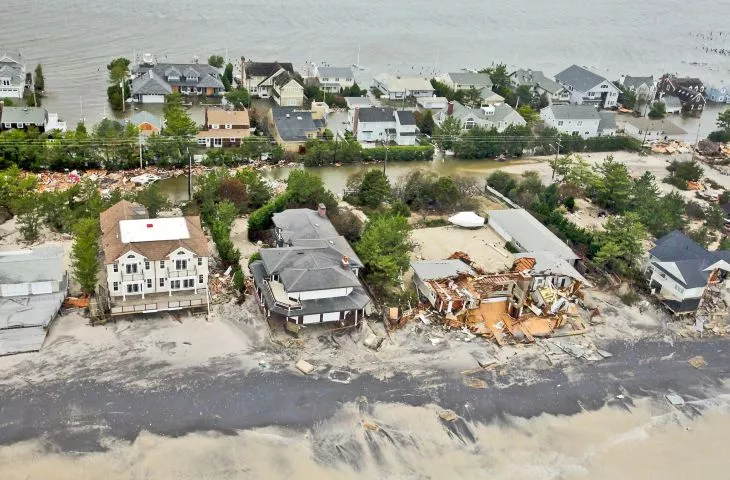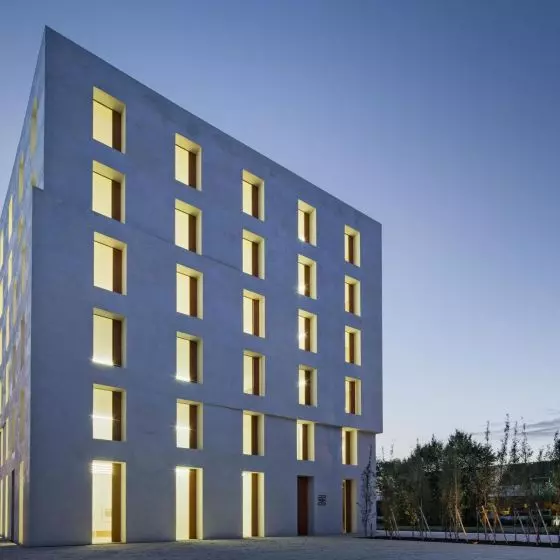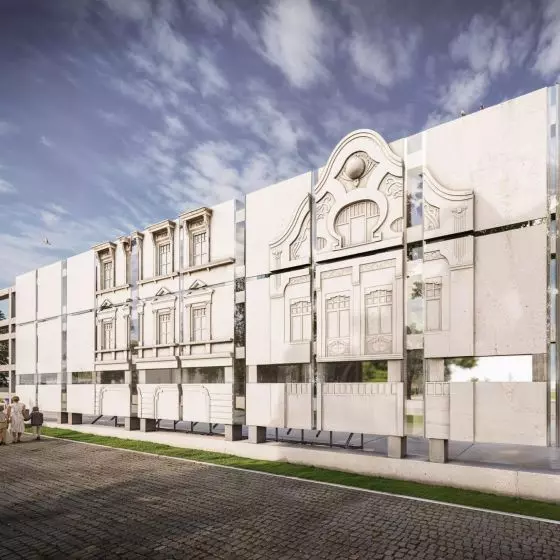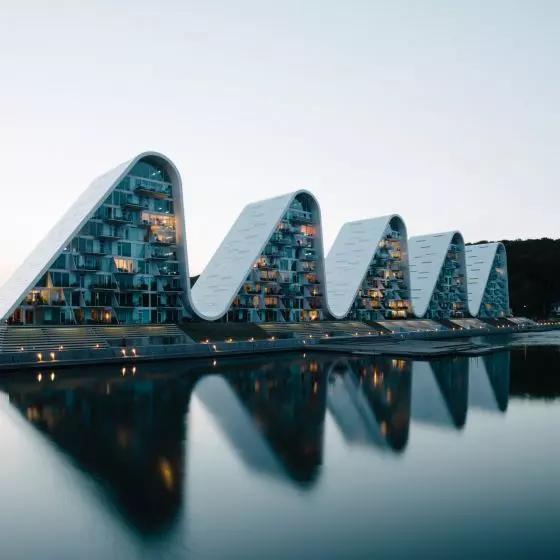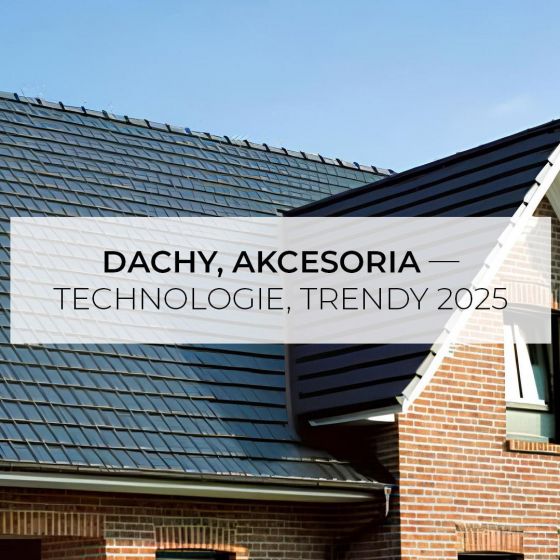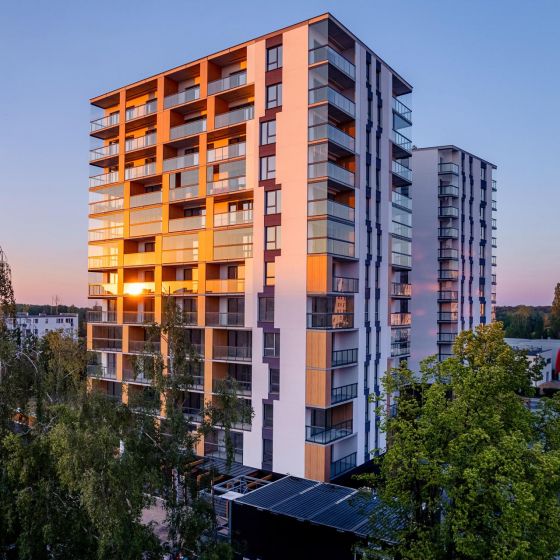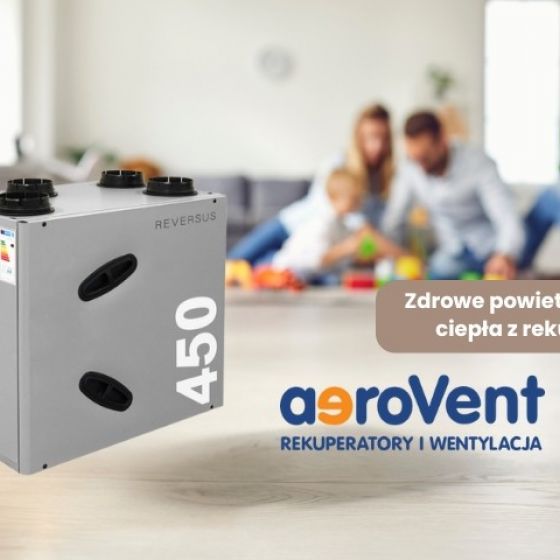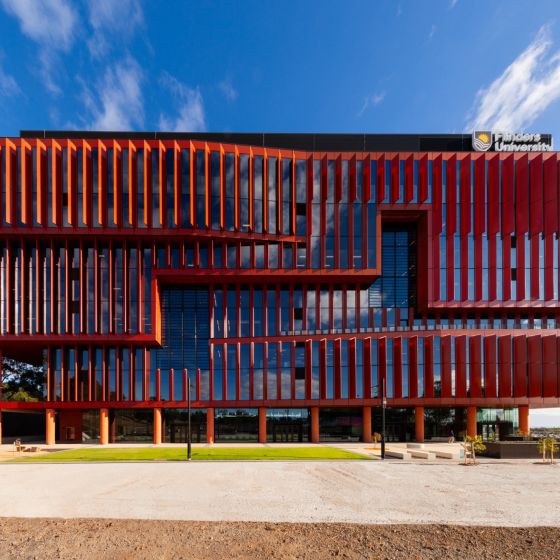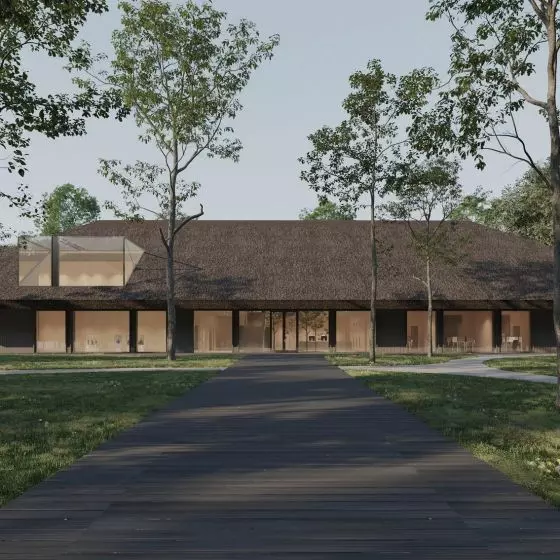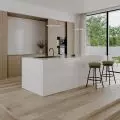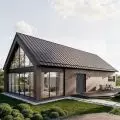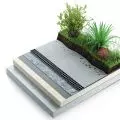"Climate Change Space" is a series of articles on architectural strategies for adapting cities to the climate crisis. Each text will touch on a different issue or function that plazas, parks and streets will have to perform in the near future - from water retention, to providing access to food, to places prepared to welcome climate migrants. Every two weeks, we will look at specific ideas from designers and already implemented solutions for transforming public spaces into a buffer to reduce the negative effects of weather change and provide infrastructure for the crisis.
Water
(Episode 1 of the series titled "Climate Change Space")
It only takes several minutes of a violent downpour to paralyze traffic in a city, with losses counted in the tens of thousands. Extreme weather events are increasing, and cities are not (yet) prepared for their increased frequency and intensity. All over the world, attempts are being made to mitigate the effects of heavy precipitation also using appropriate architectural solutions, especially those concerning the design of public spaces. The scale of such measures is sometimes single buildings, benches, streets or specially designed paving slabs. There are also projects to transform entire sections of cities to mitigate the impacts of hurricanes and storms.
Such projects require a change in attitude - water can no longer be seen as a side issue, a "pollutant" to be removed from the plot as quickly as possible into an inefficient sewage system. Violent precipitation and its effects become a stipulated stage in the operation of a project, which must function well no longer only in space, but also in time and changing weather, not fighting it, but absorbing and responding to changing weather conditions.
Big cities and big hurricanes
In the autumn of 2012, the east coast of the United States was hit by Hurricane Sandy, which in the US alone caused 305,000 residential buildings to be destroyed or damaged and losses of up to $19 billion. Affected by the devastation, New York City, based on the experience of the cataclysm, has attempted to reshape the coast in a way that would reduce the scale of the damage should another hurricane of similar magnitude arrive. Proposed by the BIG studio, the Big U project is a vision of a protective zone surrounding Manhattan. What sets Big U apart is that despite its sprawling scale, the success of the project ultimately rests on the shoulders of local communities, who are responsible for the program, function and shape of the section of the premise closest to them. Composed of a number of interconnected smaller spaces, the Big U is a flood control infrastructure, but at the same time a visually and functionally attractive public space. The visual and programmatic division is also reflected in the functional assumptions of the flood control infrastructure itself - each compartment contains a physically separate zone of protection, isolated from flooding in other zones. The compartments work together to protect and enhance the city, but each section's proposal is designed to stand alone.
The Big U - BIG Teams Vision for Rebuild by Design
© BIG, 2015
Similar work is also underway on the opposite side of the US. As part of the Resilient By Design Challenge, architects are tackling waterfront design in the San Francisco Bay Area. The designers in this case drew inspiration from the experiences of residents after the 1906 earthquake, organizing temporary settlements in San Francisco's open spaces, and the recent fires that swept through California. The HASSELL + team networked parks, streams and commercial streets, whose new function would also be to collect water and distribute it during extreme weather events. The reservoirs, collectors and the links between them designed in this way are to create everyday places that will serve as local emergency centers for the community during disasters.
Collect & Connect
© HASSELL+, 2018
Wilderness in the service of people
The city's smaller scale requires different measures than those proposed in New York and San Francisco. Also, the scale and intensity of the problem resulting from the climate catastrophe can vary, in the case of less urbanized areas, nature itself comes to the rescue, which with the help of man can perform the functions of complex infrastructure. In the Danish city of Randers, thanks to a proposal by C.F. Møller's office, the Storkeengen (Stork Meadow) climate adaptation project will not only respond to changing conditions in the Gudena Delta, but also bring this unique natural area closer to residents. The purpose of the new infrastructure will be to collect rainwater from rooftops, parking lots and roads in nearby villages, which will be collected in treatment basins designed as natural meadows. The water thus purified will be channeled into the Gudena stream, previously creating a unique wetland ecosystem that, in addition to protecting Randers and nearby Vorup from flooding, will serve to enhance natural values and expand niches for Storkeengen's unique flora and fauna. It will also provide for cattle grazing areas, canoe trails, paths and outdoor activities.
Storkeengen Stork Meadow
© C.F. Moller
Planned flooding
Strategies such as those in Randers only work if there is extensive undeveloped land available. In the case of densely populated cities, downtown parks can serve as retention functions, as happened in the Billancourt Park near Paris, designed by Agence TER. The project was part of a larger program to revitalize a post-industrial neighborhood located in Boulogne Billancourt, and was based on the duality of city and nature, the main element of which in this case is the Seine River flowing nearby. The structure located between the new quarters is built by meadows, ponds, gravel beds, islands and wetlands, the extent of which changes depending on weather conditions. The entire site, located in a hollow, is surrounded by dock-like walls, so that part of the area always remains dry and accessible to residents, and part is given over only to nature, which the authors intended to continue the river landscape of the Seine.
Billancourt Park
© Kacper Kepinski, 2017
The appearance of a designed site dependent on varying rainfall is also a major feature of many of the projects by Copenhagen-based Tredje Natur. The most visually spectacular example of designing with a changing climate in mind is the concept of a multi-story parking lot and, at the same time, a Pop-up retention basin. Placed in a large water reservoir, the building moves up and down as the water fills and empties, basing its action on the buoyancy of the structure, whose weight corresponds to the water filling the reservoir. On a normal day, therefore, the parking lot was an invisible, "ordinary" underground parking lot; in the event of a rainstorm, the underground reservoir would collect excess water from the area displacing the parking lot upward. As the sewer system becomes unclogged, water from the reservoir would be drained into it gradually lowering the level of the parking lot as well. Such a structure would undoubtedly be a very strong signal in the city's space indicating climate change, the question is whether such a function justifies the complex (and probably expensive) design and mechanisms that allow the building to function properly....
Pop-Up
© Tredje Natur
With water in mind in every detail
Situated at the opposite pole in terms of impact, the same office's project is Climate Tile - a complete set of finishing elements for public spaces. The system allows water to be absorbed in heavily built-up city centers that lack free green spaces, and was piloted in Copenhagen. The perforated panels are designed to restore the natural circulation of water in tightly paved and asphalt-covered urban spaces, thus feeding the trees growing in the area and relieving the pressure on storm drains. This functioning of the system is made possible by designed reservoirs, perforated plates and control units that collect or redirect water to other locations based on available data, an additional feature is the recognition of water with high road salt content in winter to protect plant roots from excessive salinity. The entire system is built in such a way that it can be implemented on sections of streets, but also easily expanded with additional modules. The dimensions of the slabs are based on the sidewalk slabs used in Denmark, which allows the appearance of sidewalks to be maintained and the scope of repairs to be limited.
Climate Tile
© Tredje Natur







